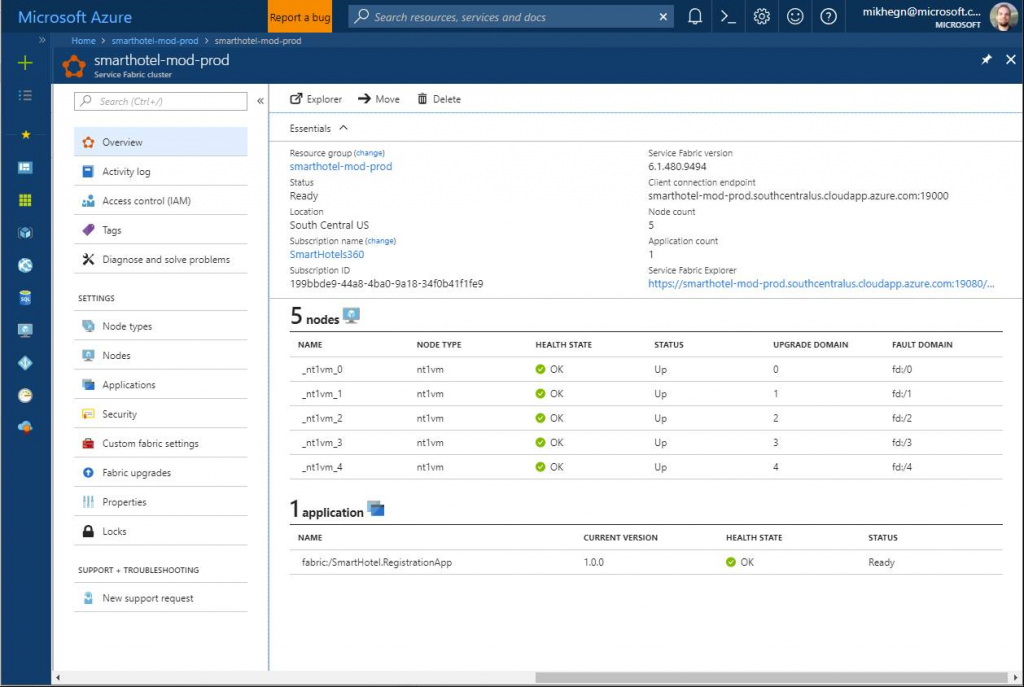
Register now for the Microsoft Windows Server Summit 2024
Stay ahead of the curve and learn about the latest innovations and best practices in the world of Windows Server. Join us March 26 to 28, 2024…



This blog post was co-authored by Taylor Brown, Principal Program Manager Lead, Windows Server and Monojit Bhattacharya, Senior Product Marketing Manager, Windows Server.
Enterprises are adopting digital transformation to engage end users, offer competitive products, empower their employees, and improve operations. To drive this transformation, developers need a modern platform that helps them deliver innovation at the rate of changing business demands.
With Windows Server 2016 we started on a journey to deliver a truly modern platform that is developer inspired and focused on delivering cross-platform and open source technologies, while maintaining Windows Server’s high reliability standards. After Windows Server versions 1709 and 1803, Windows Server 2019 marks the next milestone in this journey.
The cloud is real and so too are your own datacenters. With Windows Server 2019 and Azure, you can choose what, when, and how you leverage on-premises, cloud, and hybrid compute to modernize your applications and innovate at a faster rate.
Containers have become synonymous with digital transformation and modern development, allowing developers to focus on their code instead of worrying about infrastructure, operating systems, and deployments.
Since launching container support in Windows Server 2016 and subsequently as we provided key updates with Windows Server, version 1709 and 1803, the response has been phenomenal. Over 150 million container images based on Windows have been pulled from the Docker Hub and in just the last nine months over 500,000 installations of the Docker Enterprise Engine have been performed. Windows Server containers is available on-premises and in most public clouds. Open source orchestrators including Kubernetes, Swarm, and DC/OS support Windows Server containers. Platforms such as Microsoft Service Fabric and Pivotal Cloud Foundry directly leverage Windows Server container technology to power their services. Finally, many of you who are using the Visual Studio workflow can take advantage of an integrated debug, develop, and deployment experience by leveraging the underlying integrations of Visual Studio Code, Docker for Windows and Windows 10.
 Windows Server 2019 is the next milestone on in our journey to deliver developer innovation, bring together the innovations in Windows Server 2016 along with those delivered though the Semi-Annual Channel.
Windows Server 2019 is the next milestone on in our journey to deliver developer innovation, bring together the innovations in Windows Server 2016 along with those delivered though the Semi-Annual Channel.

Figure 1: Developer innovation on Windows Server
The above capabilities are already available in Windows Server Insider builds and your feedback will enable us to build a product that meets your needs.
Cloud has played a big part in influencing change in expectation and experience of users. Users expect 24x7x365.25 access to information in any location and across any number of devices. Applications are also better with scale, availability, and resource optimization capabilities offered by public cloud.
While Windows Server works well in various public clouds, Azure is the best place for Windows Server applications. It offers first-class native support for Windows Server as well as a continuum of modernization options – virtual machines, platform-as-a-service, microservices, serverless, and more.
Windows Server and Linux containers are supported across many Azure services. To operationalize Windows Server container deployment and environments, you can use Azure Service Fabric and Azure Container Instances services.
Azure Service Fabric’s distributed systems platform makes it easy to develop, deploy, and manage scalable and reliable microservices. It’s the underlying fabric powering many services such as Azure Cosmos DB, PowerBI, Skype and Dynamics. Open sourced Azure Service Fabric can run at massive scale and is designed with .NET and Windows developers experience in mind. It natively runs Windows Server as well as Linux. Customers such as Tencent Games, Alaska Airlines, Abbyss, and many others are taking advantage of this service offering.

Figure 2: Azure portal for Service Fabric
While containers are fundamentally changing application deployment models, Azure Container Instances, which support Windows Server containers, is a first of a kind service in public cloud that extends containers to operate in a Serverless fashion. For more on that checkout the Azure blog on Azure Container Instance.
With Windows Server in Azure in combination with other Azure services like containers, you can augment part of application stack to take advantage of new compute and data options. For example see how Altair Engineering is extending HPC compute as a software-as-a-service to its customers with Azure Windows Server Virtual Machines to handle the front end and containers to run the backend processes.
There are many advantages to using public cloud but there are also many reasons why you might still need to run your applications on-premises. Windows Server 2019 will be available for deployment across on-premises, Azure and Azure Stack.
Here a few recommended sessions:
Also, sign up for Windows Insiders to try Windows Server 2019 preview and test run Azure for free. We also love hearing from our community, so don’t forget to provide feedback using the Windows Feedback Hub app, or the Windows Server space in the Tech community.